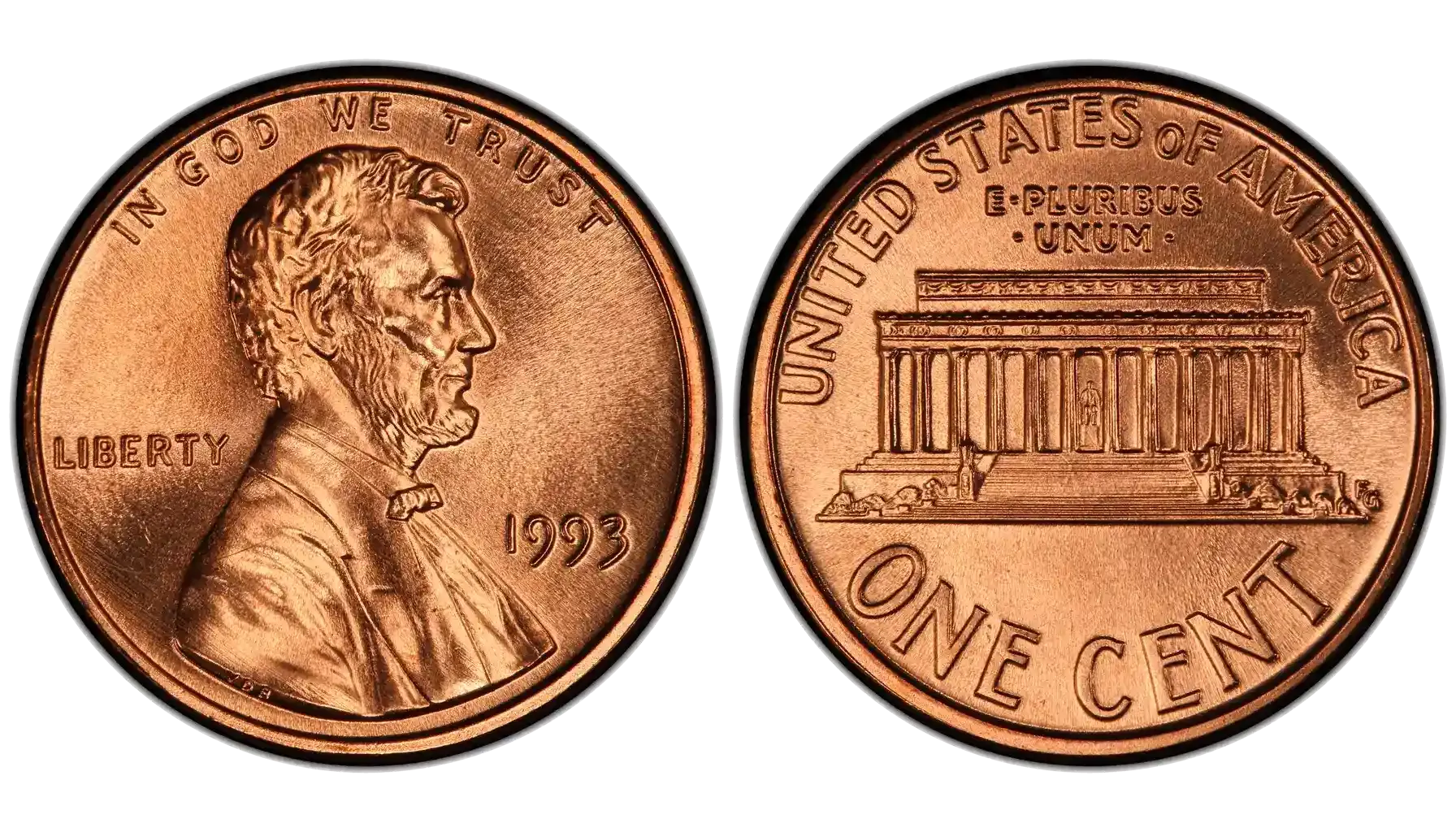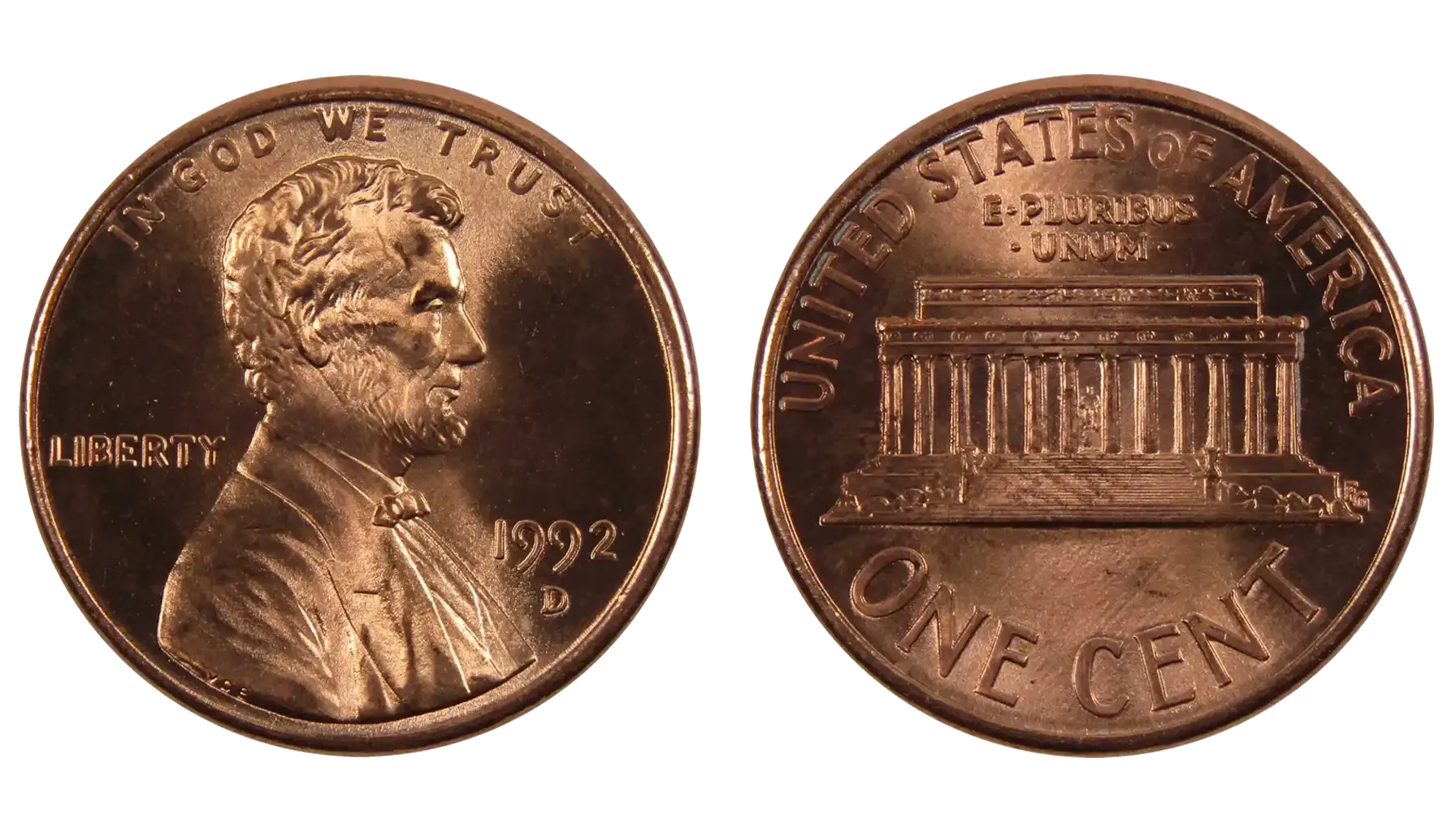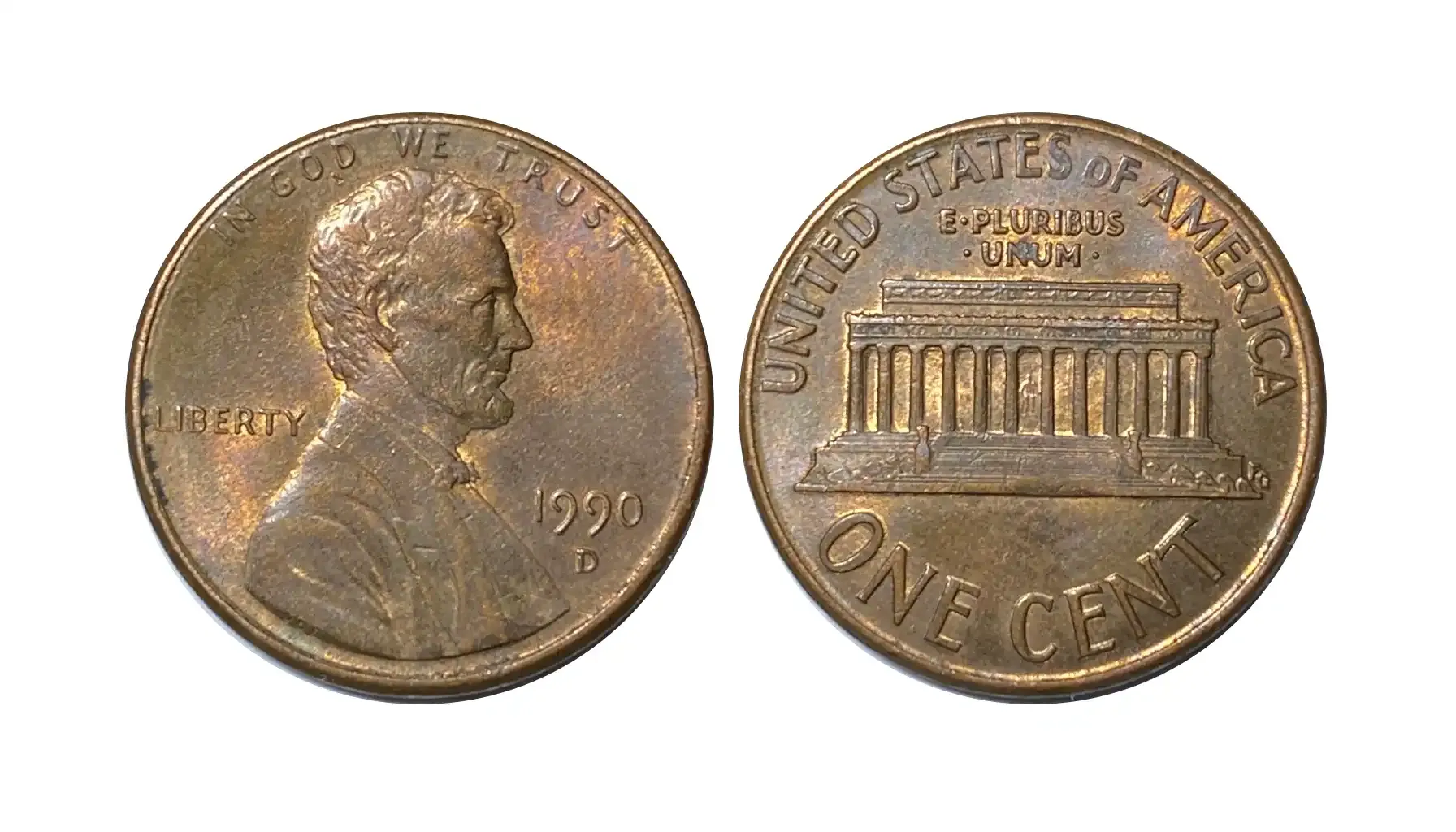Contents:
When people make mistakes, it's bad. But when coins have mistakes, it's suddenly good. How unfair. But if you have such a coin, you could sell it for some big money.
Dimes are an especially interesting case when we look for mistakes, as more dimes are minted than dollars or quarters. The more mints, the more mistakes. Rare dime error list and error identification guide here!
While we’re at it, this coin identifier can identify your other, “normal” coins and share their value.
Error Definition
What are dime error coins exactly?
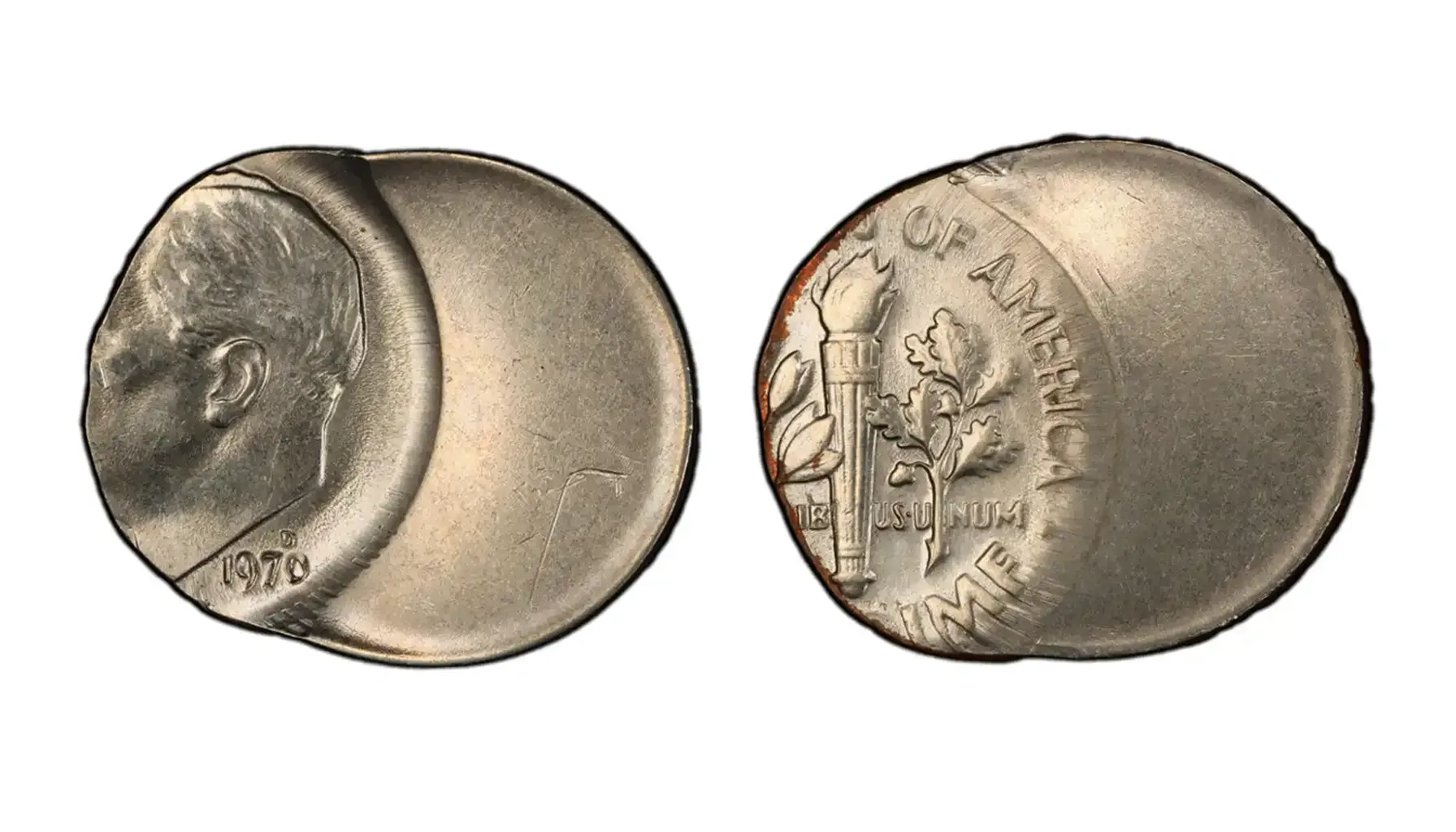
A coin error is a mistake or defect. The mistake occurs during the minting process at a mint facility. These errors can affect the design, shape, composition, and even the weight of a dime.
Coin errors are accidental, but can make the coin more valuable to collectors, depending on the type and rarity of the error.
Now let’s look at these and many other coin flaws. Get ready for a dime error list with pictures.
Dime Errors
What usually goes wrong with the dimes? Here is the error coin dime error list:
Off-Center Strike
Clipped Planchet
Double Die
Die Clash
Die Crack
Cud
Missing Clad Layer
Wrong Planchet
Repunched Mint Mark
How to identify these flaws and what's their value? We'll see one by one.
Off-Center Strike
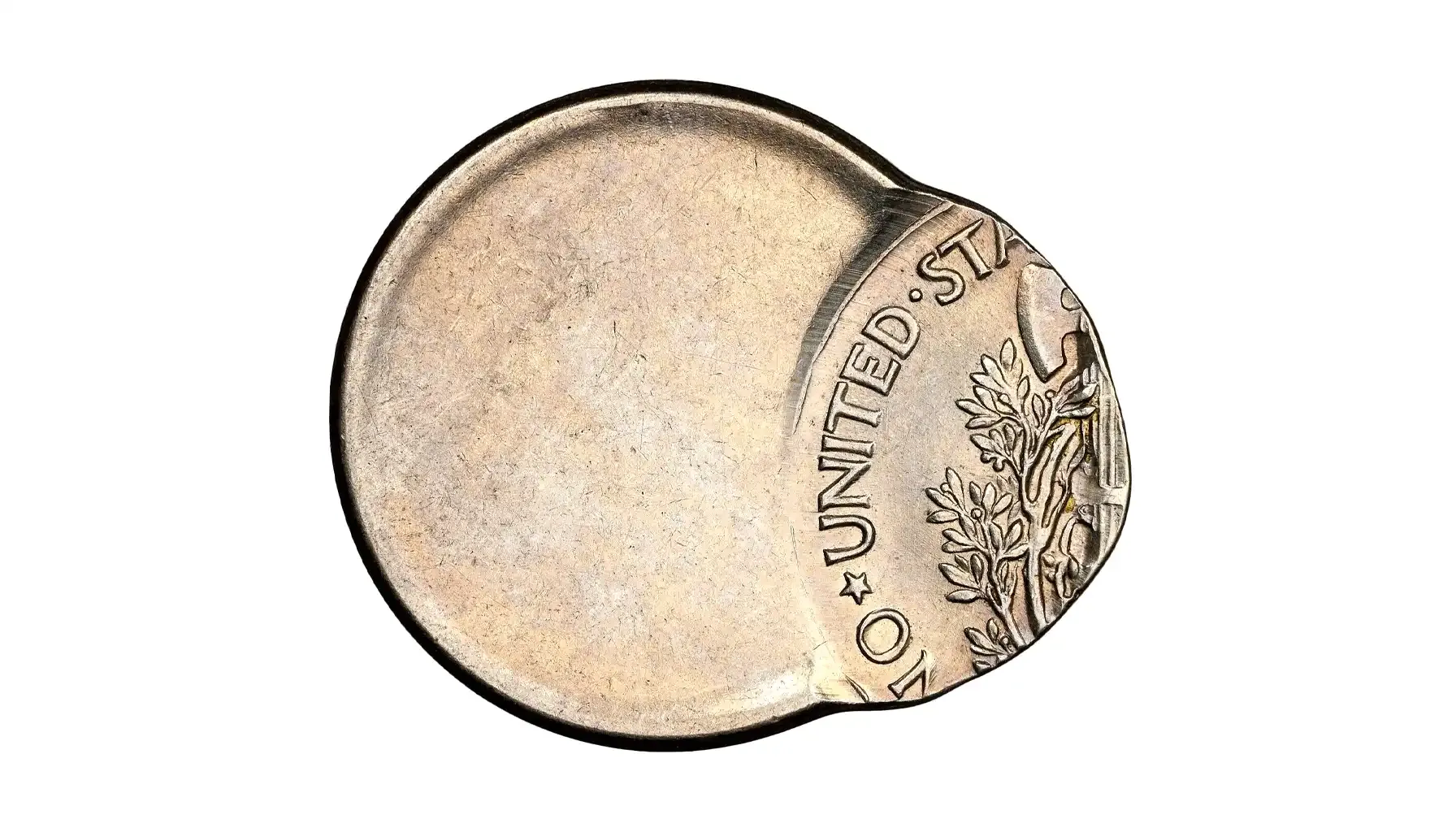
Look for: The design appears shifted toward one side. A portion of the coin might be blank.
Error cause: The coin blank (planchet) is not properly aligned in the press. The press strikes and hits too far from the centre.
Estimated value: $5-100, depending on the severity.
Off-center strikes might be harder to identify in milder cases, but they are very common. They appear on the Mercury dime error list and other lists of popular dimes.
Clipped Planchet
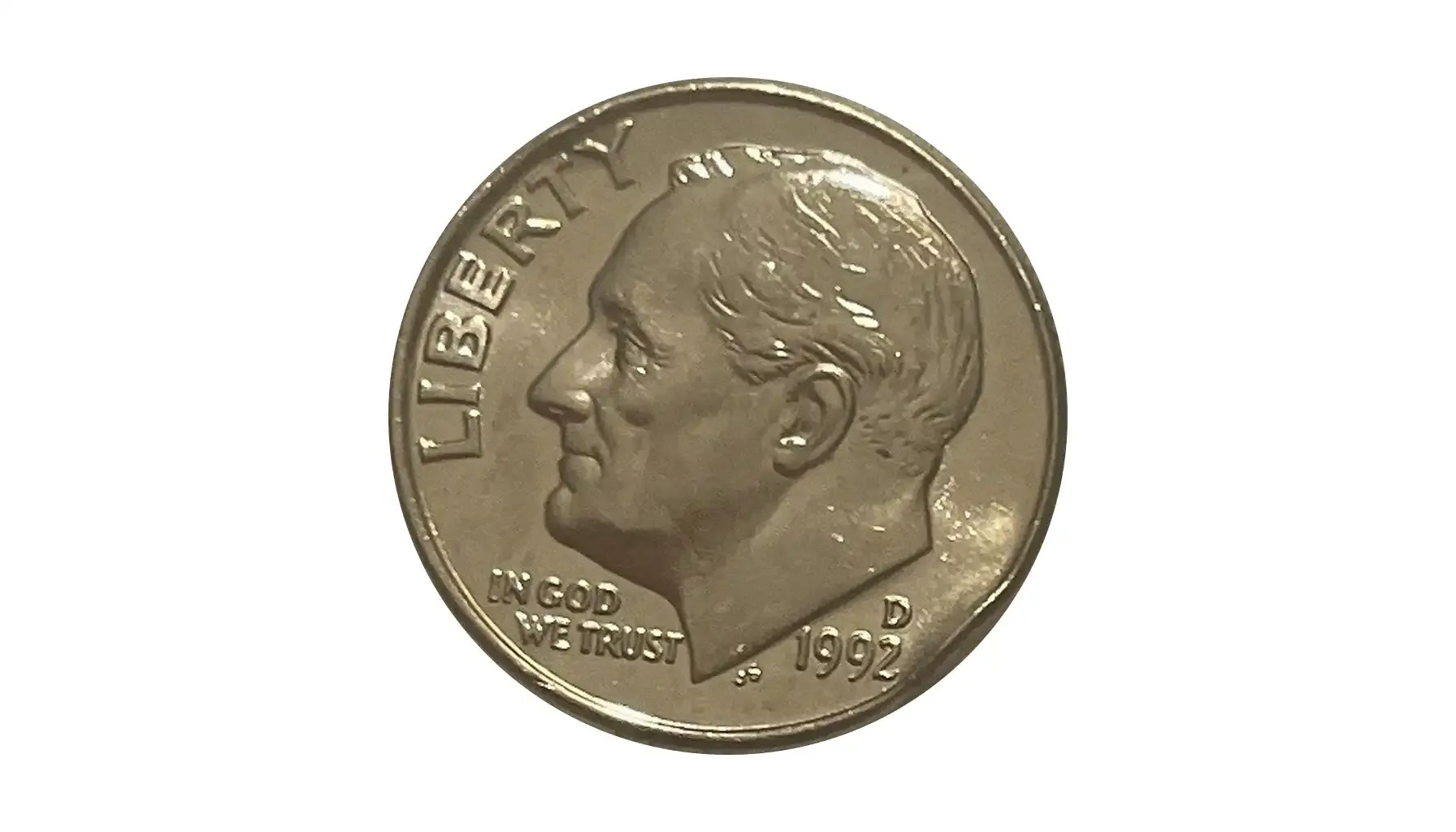
Look for: A curved clip or a straight clip is missing from the edge. The clip usually looks smooth and natural, not jagged or sharp.
Error cause: A part of the metal blank (planchet) is cut incorrectly, resulting in a coin with a missing piece.
Estimated value: $10-100, depending on the severity.
Clipped planchet is also a very common case. While this flaw can significantly raise penny dime error coin value, the error is usually “bad looking”, so the cost of such a piece isn’t super-high.
Double Die
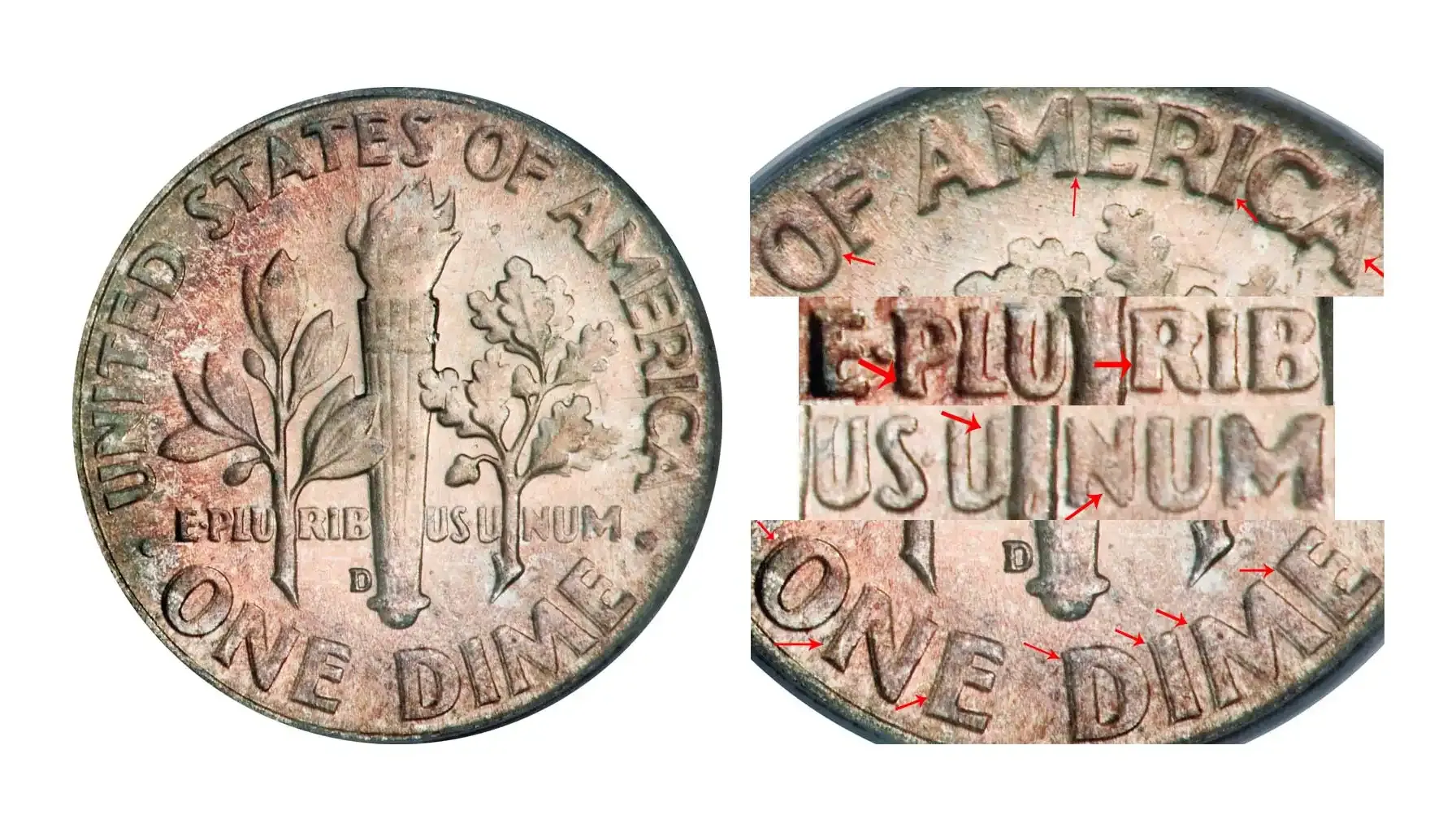
Look for: Some parts of the coin’s design, like letters, numbers, or images, appear doubled, as if the piece was struck twice. Usually, most noticeable on the dates.
Error cause: The hub (a part that makes a die) imprints the design twice at slightly different angles or positions, resulting in a doubled die.
Estimated value: $12-200, depending on the severity.
Double Dies are worth more, but are extremely hard to notice. Use coin collecting tools like a loupe or a magnifying glass to identify it.
Die Clash
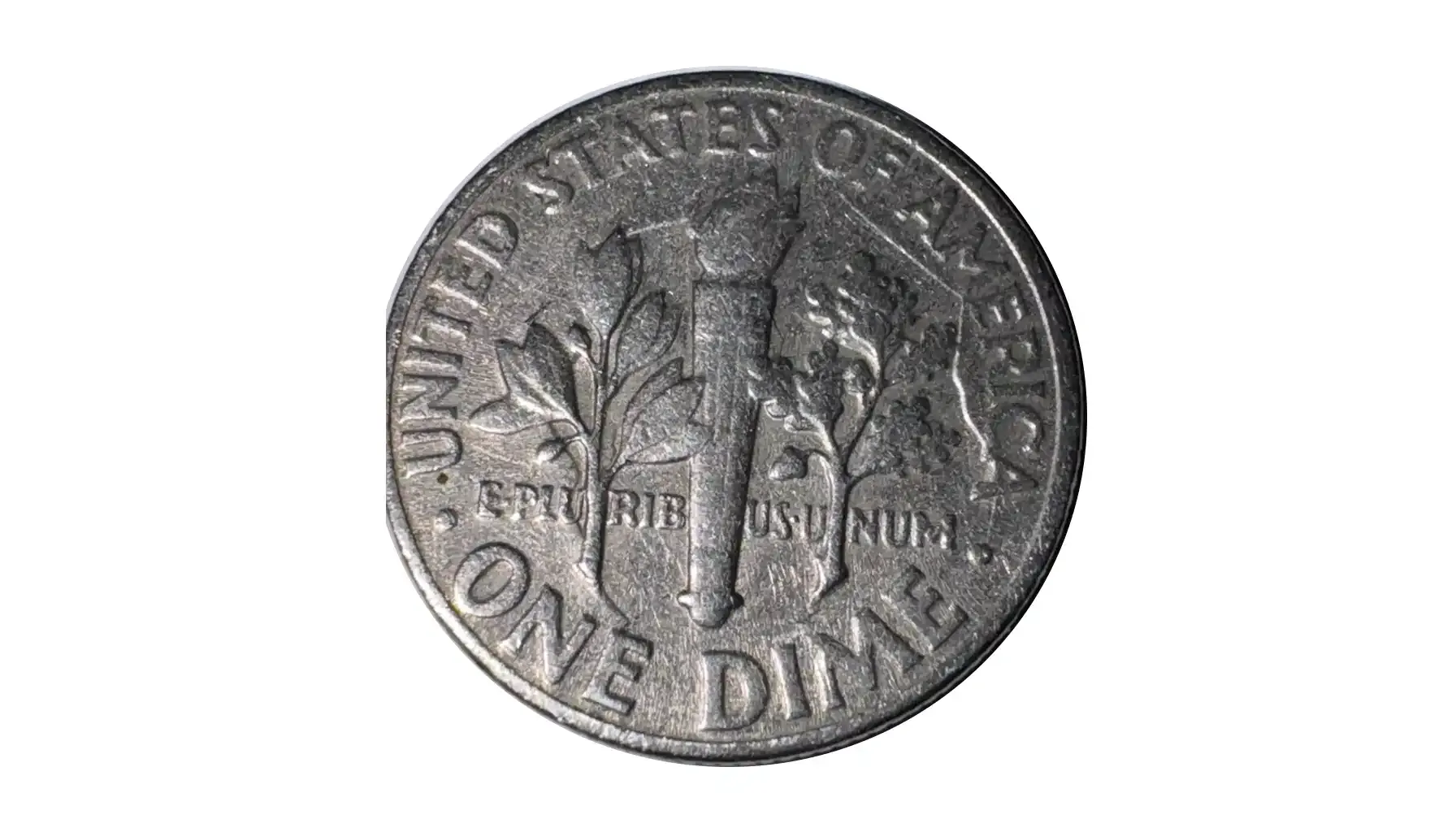
Look for: Some parts show faint, out-of-place images that don’t belong. For example, parts of the reverse design appear on the obverse.
Error cause: The coining press operates without a planchet between the dies. Obverse and reverse sides strike each other directly.
Estimated value: $15-150, depending on the severity.
This error is also quite common. Often appears on the 1936 Mercury dime error list with pictures.
Die Crack
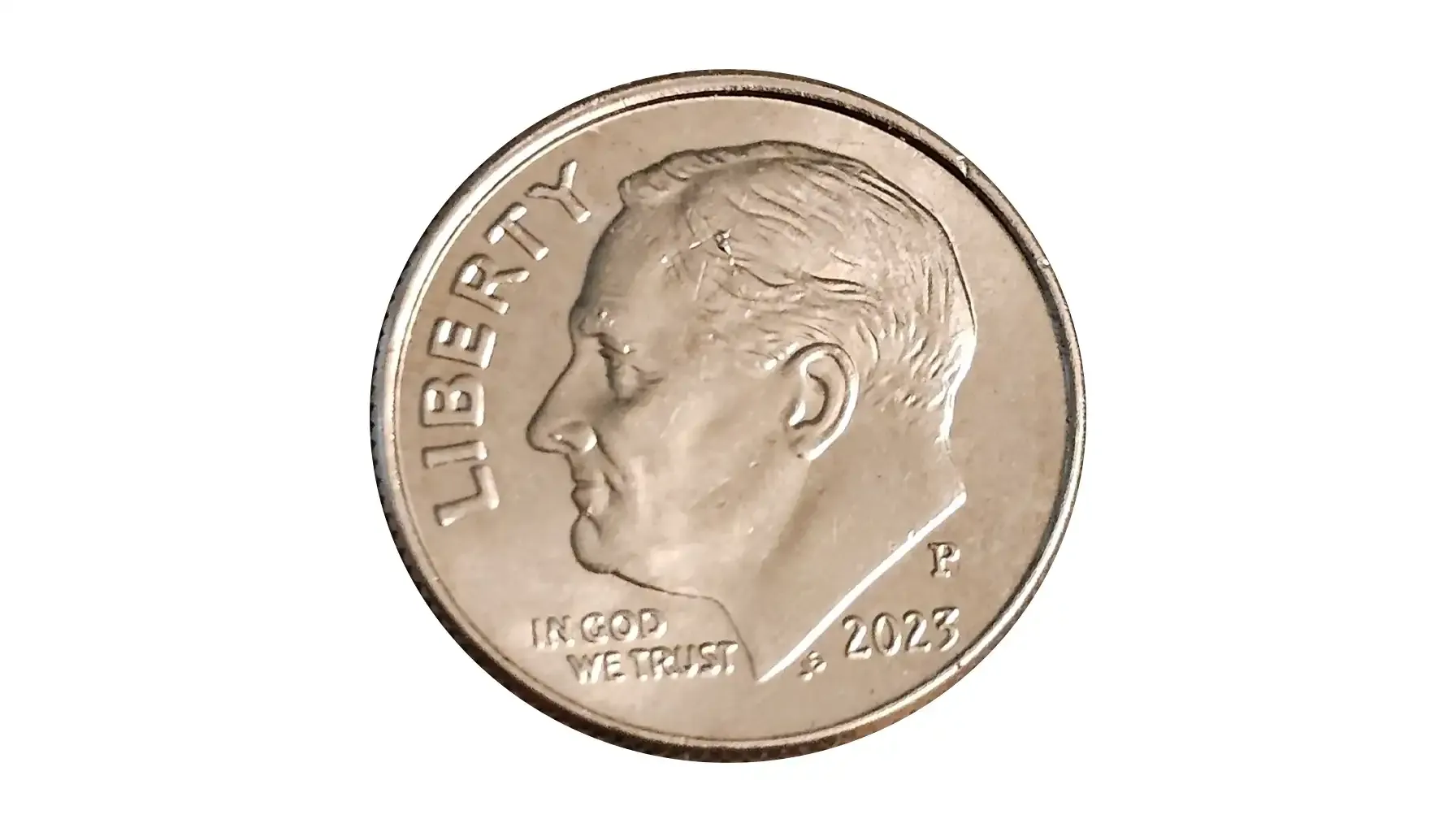
Look for: Thin/thick raised lines run across the coin’s design. The lines can be straight, curved, or branching. Overall, these lines look like cracks,
Error cause: Stress or wear after production. Or during production, when metal flows into the crack during striking, leaving a raised line on the coin.
Estimated value: $15-150, depending on the severity.
Cud
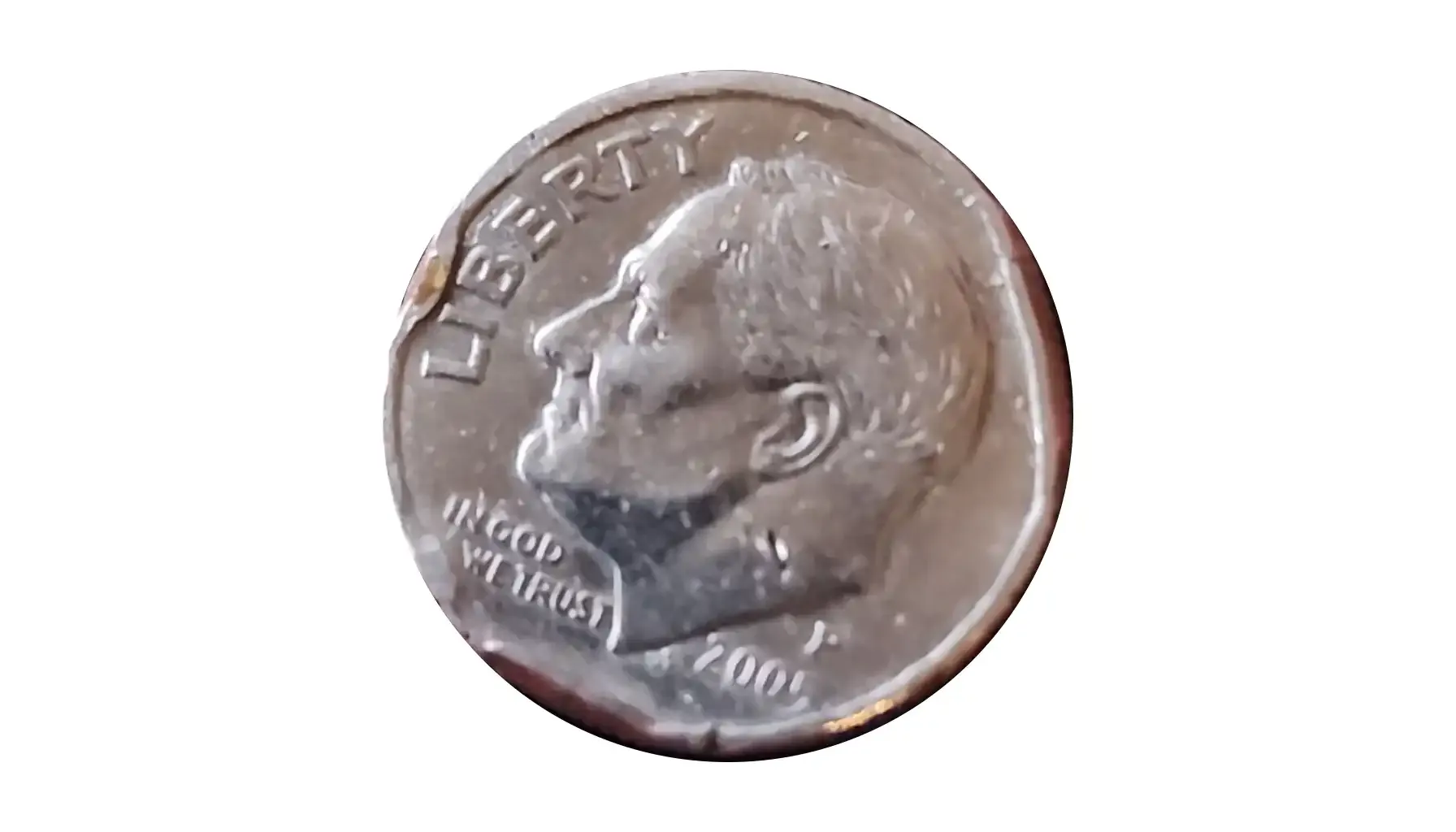
Look for: There’s a blob-like lump on the edge of a coin’s design, usually on or near the rim.
Error cause: A piece of the die breaks off near the edge. Metal flows into the gap during striking, creating the raised lump.
Estimated value: $10-200, depending on the severity.
Missing Clad Layer
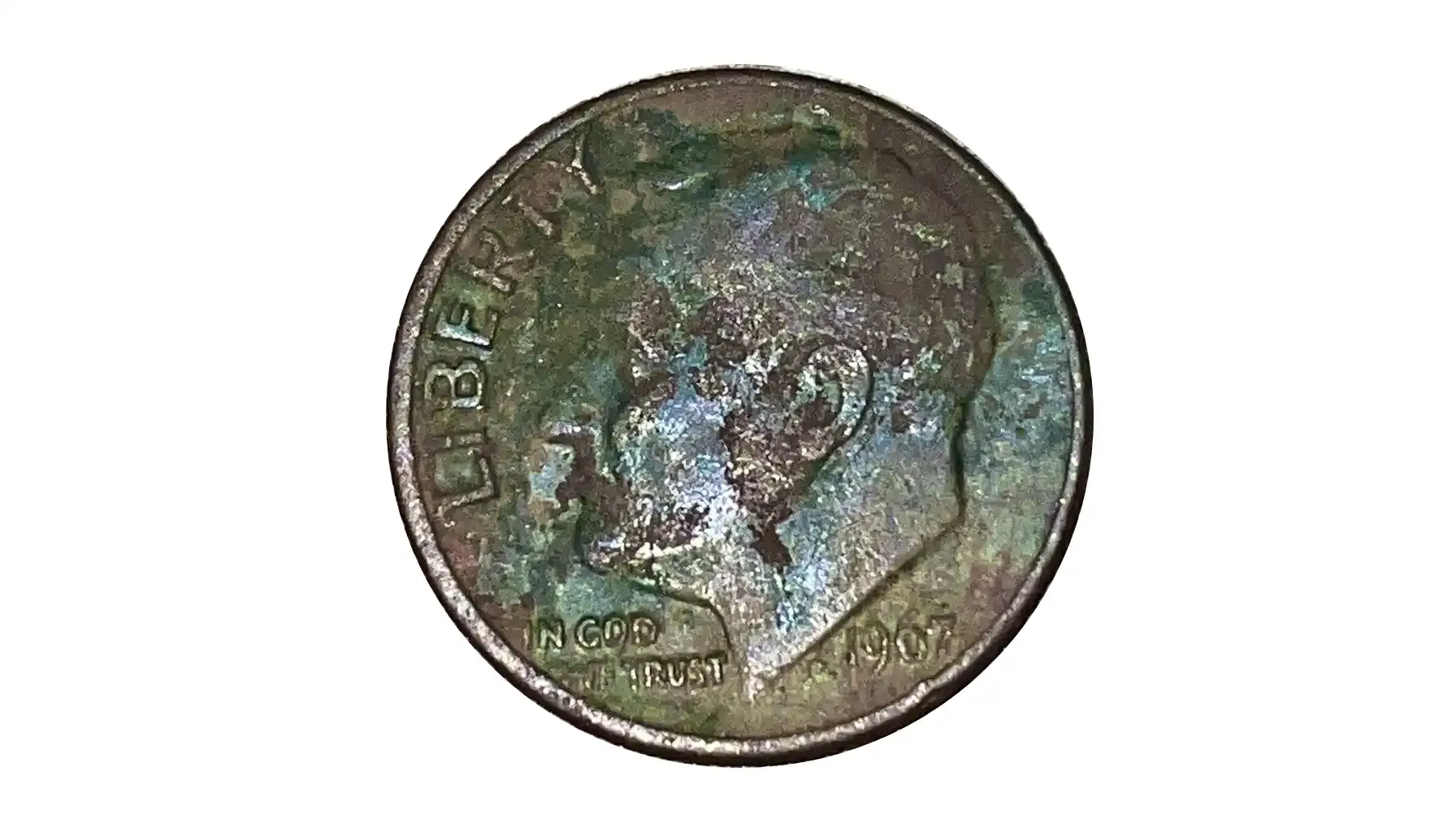
Look for: The piece looks coppery or reddish instead of silver-colored. Areas of the coin might show an exposed copper core.
Error cause: A bonding failure causes the outer nickel layer(s) to not adhere or peel off.
Estimated value: $20-200, depending on the severity.
Modern U.S. dimes (since 1965) have a clad composition: a copper core sandwiched between two layers of nickel. When nickel is missing, copper is showing. Error dime with a copper edge value is high.
Wrong Planchet
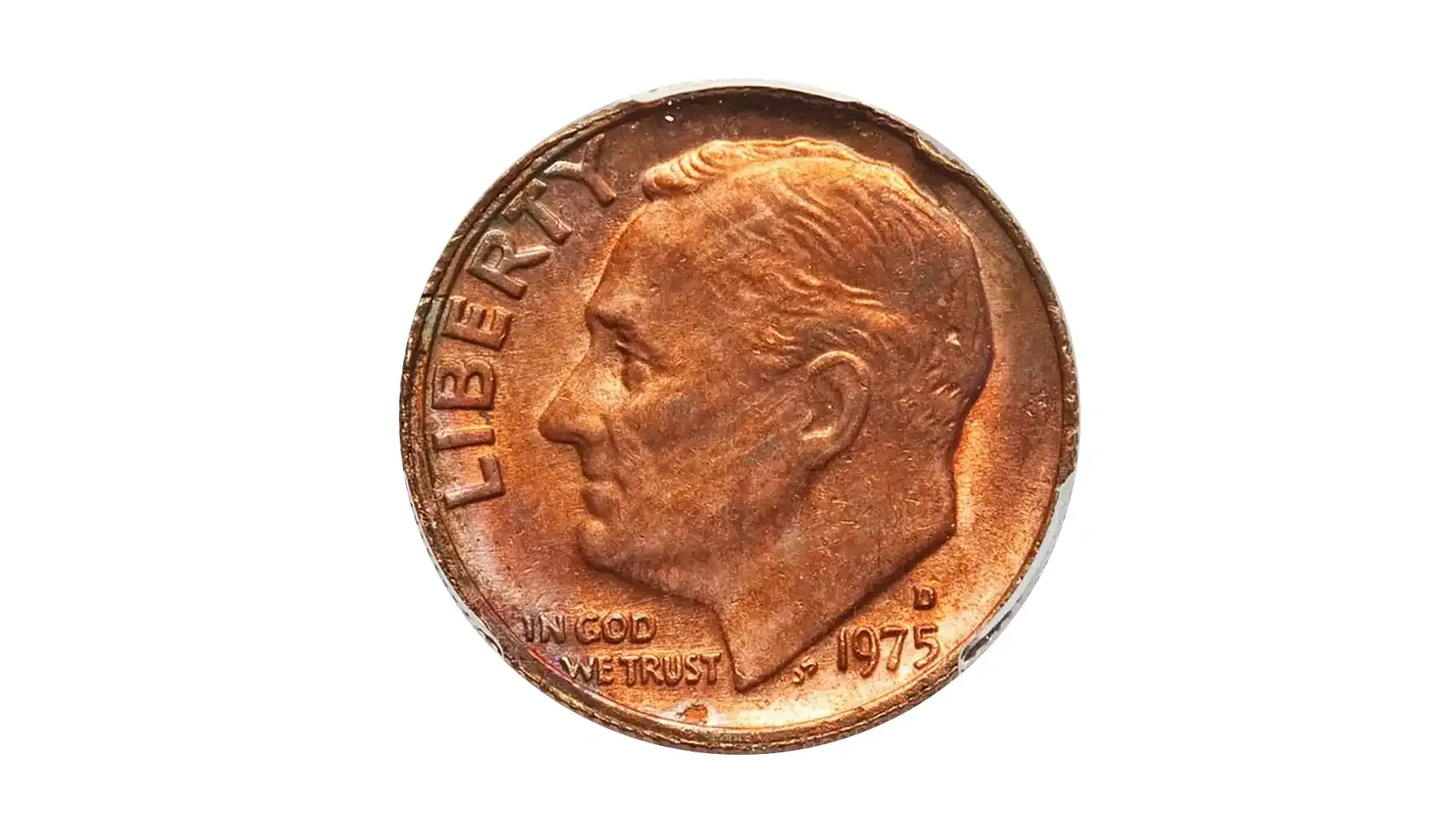
Look for: The coin’s design doesn’t match the metal, size, or thickness. Sometimes the design “doesn’t fit” into the coin.
Error cause: A coin is struck on a planchet meant for a different coin type or denomination.
Estimated value: $100-1000, depending on the type of coin.
This kind of error is very rare, especially today. The example from the photo above was taken for the 1975 dime.
Repunched Mint Mark
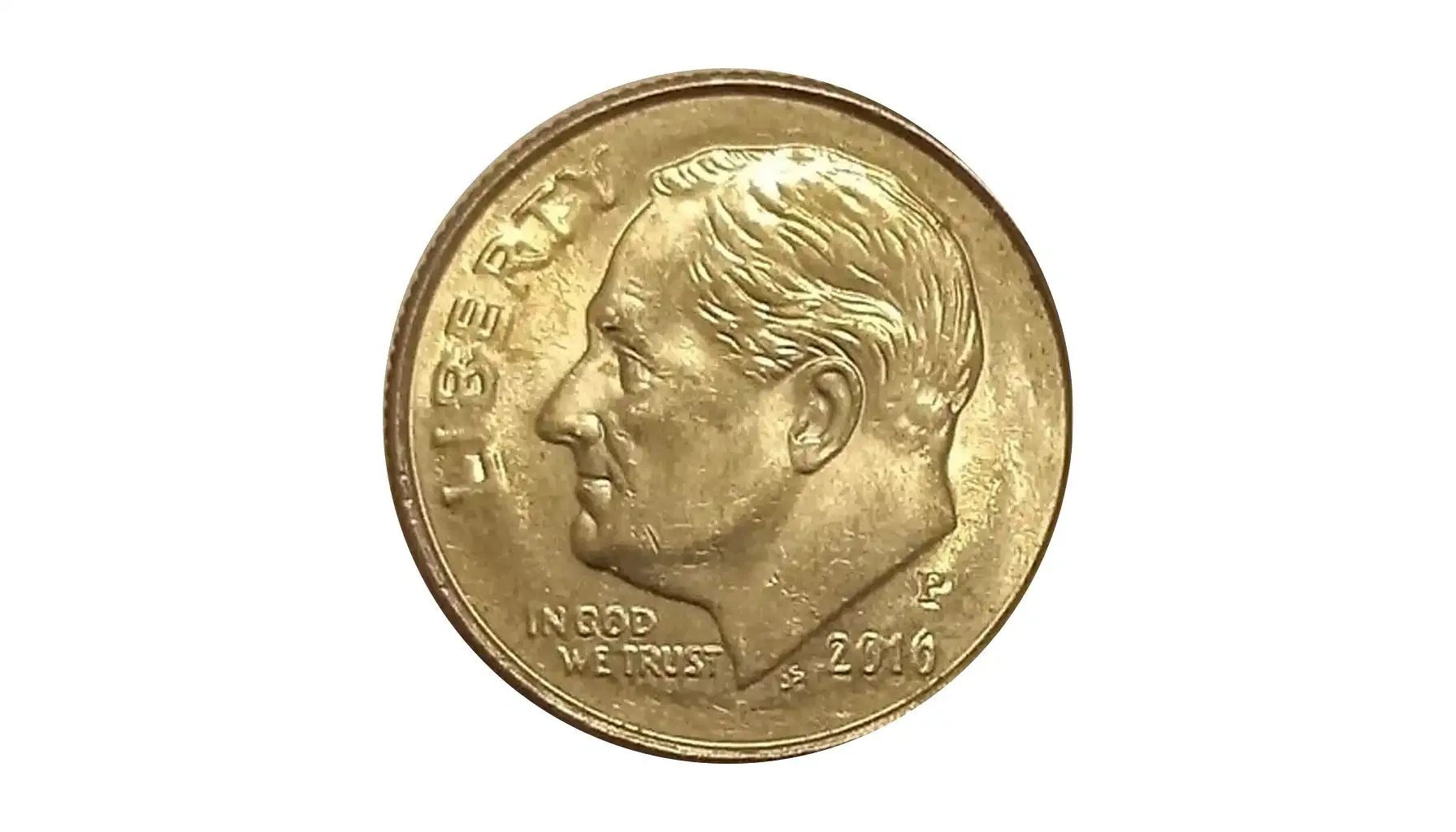
Look for: Overlapping mint marks.
Error cause: The mint mark (like “P” for Philadelphia, “D” for Denver, or “S” for San Francisco) was punched more than once into the die, but slightly off from the first punch.
Estimated value: $15-150, depending on the severity.
Mint Marks are usually found on the reverse and state the place of the coin’s making.
How to Spot Errors
Do you think your piece fits in a rare dimes worth money dime error list? Well, let’s try to find out if it has any errors:
1. Use the Right Tools. Have a good look at the coin in and out with:
10x–20x magnifying loupe or a microscope.
Good lighting (natural light or a bright desk lamp).
Digital scale (optional, for checking weight).
2. Inspect the Obverse and Reverse Carefully. Look at:
Date. Usually takes the bottom part.
Mint mark. Usually on the reverse.
Lettering. Especially look at “IN GOD WE TRUST” mottos, they often feature “COD” instead.
Portrait on the obverse (Roosevelt, Lady Liberty, etc.)
Design on the reverse.
3. Know What to Look For. Take our list and keep in mind these possible flaws:
Off-Center Strike: Design is not centered; part may be missing.
Clipped Planchet: Curved or straight piece of coin missing.
Wrong Planchet: Smaller or larger than a normal dime, odd weight or color.
Double Die: Doubled letters/numbers.
Die Clash: Faint mirror images of designs out of place.
Die Crack: Raised lines that resemble cracks.
Cud: Blobs throughout the coin.
Missing Clad Layer: Copper shows on the surface.
Repunched Mint Mark: Mint mark appears doubled or oddly placed.
4. Check the Edge:
Normal dimes have a reeded edge.
Smooth edges are a sign of errors.
5. Weigh the Coin. Use a digital gram scale:
Find how much your particular dime should weigh.
Significant deviation of dime weight in grams means there’s a wrong planchet or a missing layer.
6. Compare to Known Examples. Contact for information:
Coin forums (e.g., Coin Community, Reddit’s r/coins)
Professional coin grading services (like PCGS, NGC) if it's a rare find.
Hopefully, this little guide helped you. Be watchful, as some collecting errors, like misprints, are harder to identify.
Weight and Thickness
You already know that dimes should be a precise weight and diameter. If they're not, they could either be an error or a counterfeit.
The US alone minted many dime series with different parameters, but this table should encompass most of the varieties circulating in the market.
Dime | Diameter (mm) | Thickness (mm) | Weight (g) | Composition | |
Barber Dime (1892–1916) | 17.9 | 1.2 | 2.5 | 90% silver, 10% copper | |
Mercury Dime (1916–1945) | 17.9 | 1-1.35 | 2.5 | 90% silver, 10% copper | |
Roosevelt Dime (Silver) 1946–1964 | 17.9 | 1.35 | 2.5 | 90% silver, 10% copper | |
Roosevelt Dime (Clad) 1965–present | 17.91 | 1.35 | 2.268 | 75% copper, 25% nickel | |
The weight of a dime in grams depends on its material. For example, 1937 Mercury pieces are silver-based, so the silver dime weight is on the heftier side. Copper dime error pieces are lighter in comparison.
Most Valuable Dime Error List
Here's a rare dime error list by year of the best-selling flawed dimes:
Dime | Error Description | Sale Price |
1975 No S Roosevelt Dime | Proof piece missing mintmark (No "S" mark) | $456,000 |
1942/41 Mercury Dime (P) | Overdated (1942 struck over 1941) | $90,000 |
1968 No S Roosevelt Dime | Proof piece missing mintmark | $40,250 |
1942/41 Mercury Dime (D) | Overdated (1942 struck over 1941) | $12,028 |
As you can see, it takes a special piece to enter the most valuable dimes dime error list. The flaw has to be rare or very severe, but the state of the coin itself should be excellent.
Missing mintmarks and wrong dates easily fit in worth rare dime error list.
The Next Step After Identification
Congratulations! You're sure that your dime/other coin has a flaw. So what do you do next?
1. Verify the Error:
Double-check that it is indeed a minting flaw and not just damage. Read more collection guides about errors or follow the checklist error coin dime error list.
Compare your coin with images of known pieces to see if it matches any of those types.
2. Document the Coin:
Take clear, detailed photos of the front and back of the piece.
High-quality images help sell or authenticate the piece later. Pay attention to the following:
3. Consult a Professional:
If you’re unsure about the authenticity of the error, you might want to get it professionally appraised.
The professional appraiser can also grade the piece and potentially raise the value.
4. Check the Value:
Once you know it's an error, check for its market value. The rarity and type of the error play a huge role in the price. A rare error copper dime is worth more than common pieces.
Websites like eBay or specialized coin auction houses give a sense of what similar flawed pieces cost.
6. Decide the Next Action. You can either:
Keep it as a part of your collection. With time, the value rises.
Sell it privately or at an auction. If the moment is right, you can win a jackpot.
Coin ID Scanner
If your appraiser is absent, Coin ID Scanner has got your back.
This app uses AI to identify all kinds of coins.
At the moment, the platform has 150,000+ entries from all over the world: The US, UK, Germany, Japan, China, etc.
The app is very user-friendly. It has a simple, modern interface and many teaching tools for beginner collectors. For example, educational blogs about coins and even an AI assistant. This AI assistant can help you with many numismatic questions.
You can use Coin ID Scanner for free. Available on iOS and Android.
